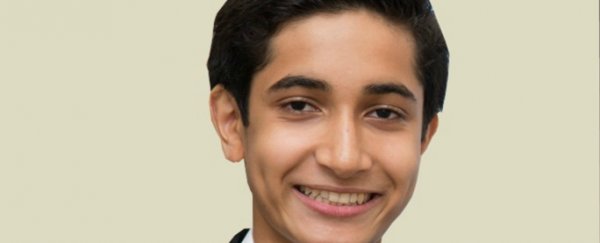Adriel Sumathipala is a self-described tinkerer. The 16-year-old says the trait runs in the family: His grandfather, who died of a heart attack before Sumanthipala was born, loved to build things too.
Once Sumanthipala learned that he and his family were also at risk for the disease that caused him to know his grandfather solely through "stories and grainy photos", he tried to stick to a regimen of exercise and healthy eating.
But he felt frustrated that he had no way to monitor the effectiveness of his lifestyle changes, because today's cardiac diagnostic tests require expensive lab testing to measure cholesterol levels.
So, the teen set about creating an on-site, super low-cost, rapid heart disease test that ultimately won him a spot as one of Google's 20 Global Science Fair finalists.
Instead of measuring cholesterol, his test would measure oxidised low-density lipoproteins (Ox-LDL), a biomarker that has an even stronger correlation with cardiac disease.
"I envisioned a diagnostic that would place vital health data in the hands of doctors and patients and thus establish the framework for a personalised medicine revolution," he writes.
With the help of his biology teacher, Sumathipala spent two years trying to build such a diagnostic system. Ultimately, he was able to hack an inkjet printer to deposit enzymes onto two Ox-LDL sensors that he developed. The paper sensor could then indicate whether the enzymes have high or low concentrations of the cardiac disease biomarker Ox-LDL. (Learn more about the project here.)
Sumathipala estimates that the paper-based sensors and the repurposed printing system could bring the price of tests down to only about US$0.02, with test results taking minutes instead of days to show themselves.
Sumathipala is one of 22 incredibly intelligent teenagers who made it to this year's Google Science Fair finals. Google will announce the top project in September; the winner gets a 10-day trip to the Galapagos Islands and US$50,000 in scholarship funding.
"There's a different kind of inspiration that comes from helping the people you love most," he writes. "It doesn't come in a moment of cerebral realisation or with the flickering of an imaginary light bulb. It's a continuous and unlimited inspiration. The kind of inspiration that pushed me through late nights in the lab, kept me going after innumerable failures, and stopped me from giving up my work."
This article was originally published by Business Insider.
More from Business Insider:
